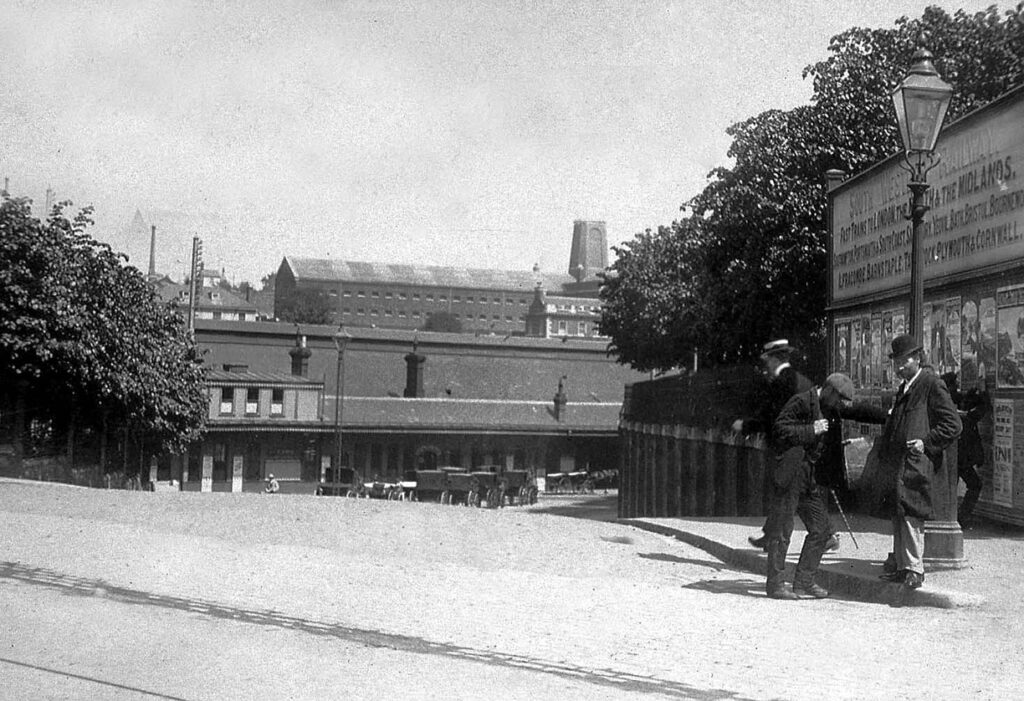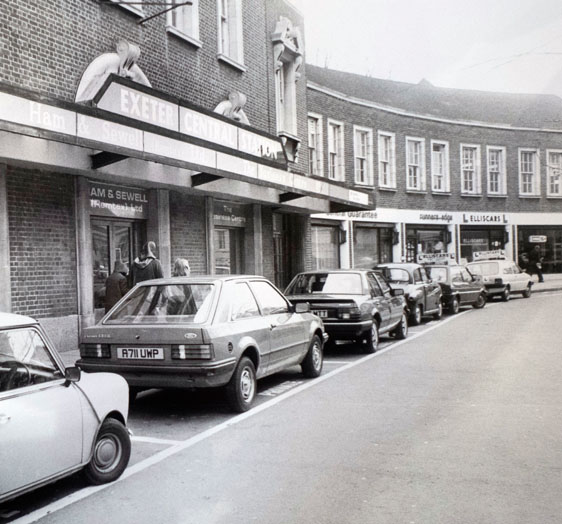Community researcher – Abigail Robinson
Formally known as Queen Street Station, Central Station was built in 1860 by the London and South Western Railway. It had been decided that a second route between London and Exeter would be opened for traffic and this went ahead on 18th July 1860. The London and South Western Railway’s chairman and directors travelled from Yeovil on a train to be greeted by the crowds at the celebration in Exeter. Mayor Thomas E. Drake gave a speech and the visitors were invited to a banquet in Northernhay.
Another railway line was added in 1862 from Waterloo via Salisbury and Yeovil and employed Longbrook Valley as an entrance into the city. Two through-lines were added in 1874, as was a wooden shed over the lines. During the Great War, Queen Street Station was used to transport troops, in particular between Falmouth and Salisbury.
On 22nd October 1914, the station saw the arrival of 32,000 Canadian troops and 7,679 horses, who passed through Queen Street to Salisbury Plain, as they travelled to the front lines. Throughout the war, the injured returned to hospitals around Exeter via Queen Street Station. Soldiers were carried on stretchers and ferried by cars; those left blinded by gas poisoning were led in lines to nearby hospitals, following one another closely.
On the morning of 3rd June 1927, a fire was discovered at the station by a member of staff. It had started above the staff bedrooms and quickly spread. Ethel Handfield, who worked in the station’s refreshment rooms, and her manager, Mr W. F. Smith, investigated the fire but, when Handfield lost sight of Smith, she called for help. Luckily, the station was not seriously damaged.
In 1931 the station was rebuilt to a new design accepted by the City Council after previous designs had been rejected. This station opened on 1st July 1933 and was named Central Station; the building was now a crescent shape, so that cars and taxis can stop outside and drop off passengers. In preparation for D-Day American troops used the station to travel during the Second World War. Today, the station remains extremely popular.

